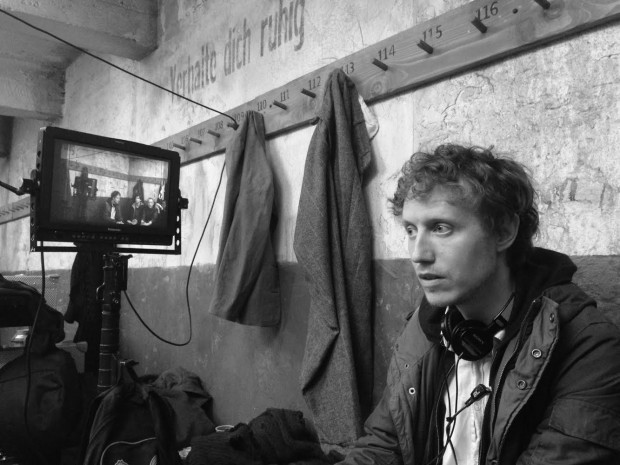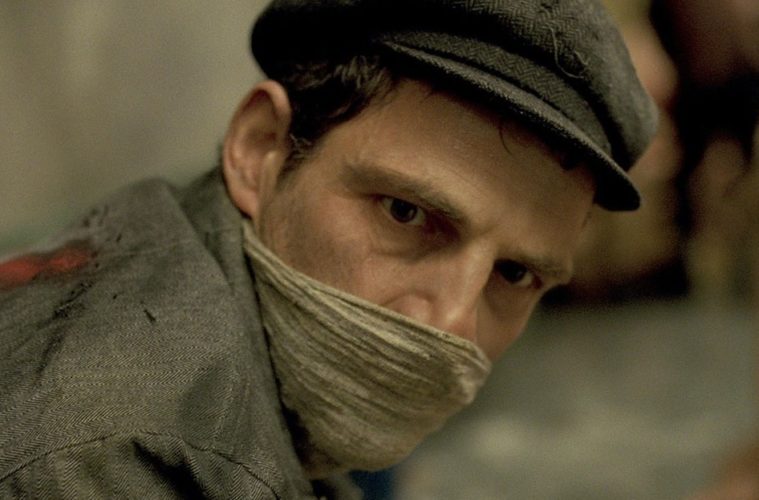
Hungarian filmmaker László Nemes has the distinction of winning the prestigious Grand Prix at the Cannes Film Festival earlier this year with his debut feature Saul fia (Son of Saul). The film was met with wide critical acclaim after its world premiere — including ours — and has subsequently been submitted as Hungary’s official entry for Best Foreign Language Film at the Academy Awards. I had the chance to talk to Mr. Nemes during the 23rd Filmfest Hamburg, where the harrowing Holocaust drama celebrated its German premiere. Check out our full conversation below.
Is it true that the film was turned down by the Berlinale?
That is true. They didn’t want us in competition at least. I had thought, for the 70th anniversary of the liberation of Auschwitz, it would be a good film for Berlin, but…
On the other hand, the movie didn’t only make Cannes competition, which is rare enough for a debut feature, it went on to win the Grand Prix as well. Can you talk about the whole Cannes experience?
Well we knew pretty early on that we’d be in Cannes but we didn’t know in which section – we thought, maybe Un certain regard. And then came the news right before the official announcement that we’d be in competition, which was really quite a shock. To be honest it was scary, too. But we knew of course that this would give our film the kind of exposure it wouldn’t get otherwise. I also think the slot the festival chose to put us in – early on in the fest, low-profile – was suitable for the film.
Before going there, I had thought it’s going to be just superficial excitement, but when we actually presented the film, it was an almost spiritual experience. You feel a connection to the film, to the festival, to the audience. When I was walking into the theater, it felt like everything was in slow motion. And it was the first time that the cast and crew reunited after the shoot wrapped almost a year ago, so it was very special.

Most debut films would be impressive if they show ambition or have a brilliant idea. Yours is – on top of that – also technically accomplished. Where did you learn to do that?
I was an assistant director for years. I was an assistant to Béla Tarr in Hungary for two years, which taught me the basics of not just filmmaking, but high-level filmmaking – in terms of how to choreograph a scene, how to stage complicated shots, how to work with a professional crew etc. Also I had made three short films before this. And I had built a relationship to some key creative crew members over the years: the DP, the production designer, the sound designer. On such a foundation I can communicate with them effectively. It’s like we’ve been doing rehearsals all this time.
Talk about the technical achievement of the film, can you share how the astonishing cinematography came to be?
My cinematographer (Mátyás Erdély) is my age but he’s much more experienced – he’s shot like 15 features films. I think to shoot this film did require that kind of experience too, because this is a film where the cinematographer must be not just very good, but also someone who could resist the temptation to shoot a beautiful movie. The images needed to have a raw quality, not a pretty one. So I think it was important that he has had all that experience, for he’s past the stage of his career where he was just concentrating on pretty lighting, framing, and compositions. He understood the fact that visually, we needed something low-key, simple and raw. With that understanding we were able to speak the same language throughout the shoot. Before this we had made three short films together and he’s a cinematographer who’s involved even on the screenplay level. He asked me all the time about the story. For him it’s always story first. In fact we established a set of codes for this movie which we actually wrote down. Rules like: this is not a beautiful film. No beautiful shots. There would be no aestheticizing the suffering of the people. Or that the camera should be trained at eye level, making it a very subjective experience. Also, to use more or less only one 40mm lens because we wanted something that’s close to the human perception. And we didn’t want anything iconographic that would distract people’s attention. The movie should look a little messy, with an uncertain, unfinished quality.
And why this aspect ratio?
We were deciding between widescreen and the narrow academy aspect ratio. In the end we found that widescreen – although it would have looked very nice – would have been too… cinematic, it would have made a spectacle out of the background, made the background so stylistically important that we would lose the portrait-like focus we wanted for the film.
So you wanted the film to feel like a portrait.
Yes, we wanted it to be like a portrait because it’s about one man’s experience in hell. We’re all companion to the main character, he guides us through hell.

Can you talk about making the main character as non-verbal as he is?
These men are dead. This is something very central to how we approached the characters. These are special people. They’re so beyond traumatized they don’t function as normal human beings anymore. So our main character, like the others, is sort of a robot. He’s like someone who’s already dead but comes back alive or suddenly finds some life inside. So it had to be approached in a very low-key manner. The way these people are confronted with sufferings and the constant presence of death, why would they even be talking? As closed up as they must have been, it couldn’t have been natural for them to communicate their inner feelings. So that is a basic trait of our main character.
In fact we can’t even be sure if it’s really his son at all, can we?
Yeah it’s something that keeps coming back. And I think it’s essential to the story to try to discover who, what this boy is, and also to contemplate the implications of both possibilities. The viewer must consider both scenarios. In the end, I think the question we can ask ourselves is: does it matter if it’s his son or not?
The implications might be even more powerful if it’s not.
Yes, absolutely. A lot of people in the crew – I’m not going to say who here – think the boy is not his son.
Have you noticed different reactions from different audiences with this film?
I haven’t travelled enough to assess that. But overall I feel a strong engagement on the part of the audience every time, whether in Europe or North America.
What do you think is the relevance of a Holocaust film like this today?
I think people never had a direct, visceral understanding of what it might have been like to be inside a concentration camp, to be caught in the middle of an extermination machine. There have been attempts to approach it in a more intellectual manner, but not viscerally – to put you in the shoes of someone in that situation. It’s something that cinema can achieve, this kind of direct, intuitive relationship between the individual audience members and the character. We lack empathy in the sense that there’s a distance when we think about the camps in abstract terms. So I hope this movie can help make people really feel what it’s like to be oppressed and destroyed in our human experience. Also, if we consider Holocaust as a myth and not as something that took place in this world – I mean, Auschwitz was a factory, built by people and not by martians – if, as a civilization, we don’t address the genocidal tendency in our nature, how can we prevent such atrocities from happening again? So – maybe I’m being optimistic here – I think that’s something that cinema can do, to speak to the human in the audience. From there we can draw our own conclusions and the message becomes universal.
So it’s not just anti-Semitism that you’re trying to address with the film.
Absolutely. Of course, Jewish people have been subject to so much hatred for a long time so it’s specific in this sense obviously.

Son of Saul screened at the 2015 Filmfest Hamburg and will open on December 18th.

